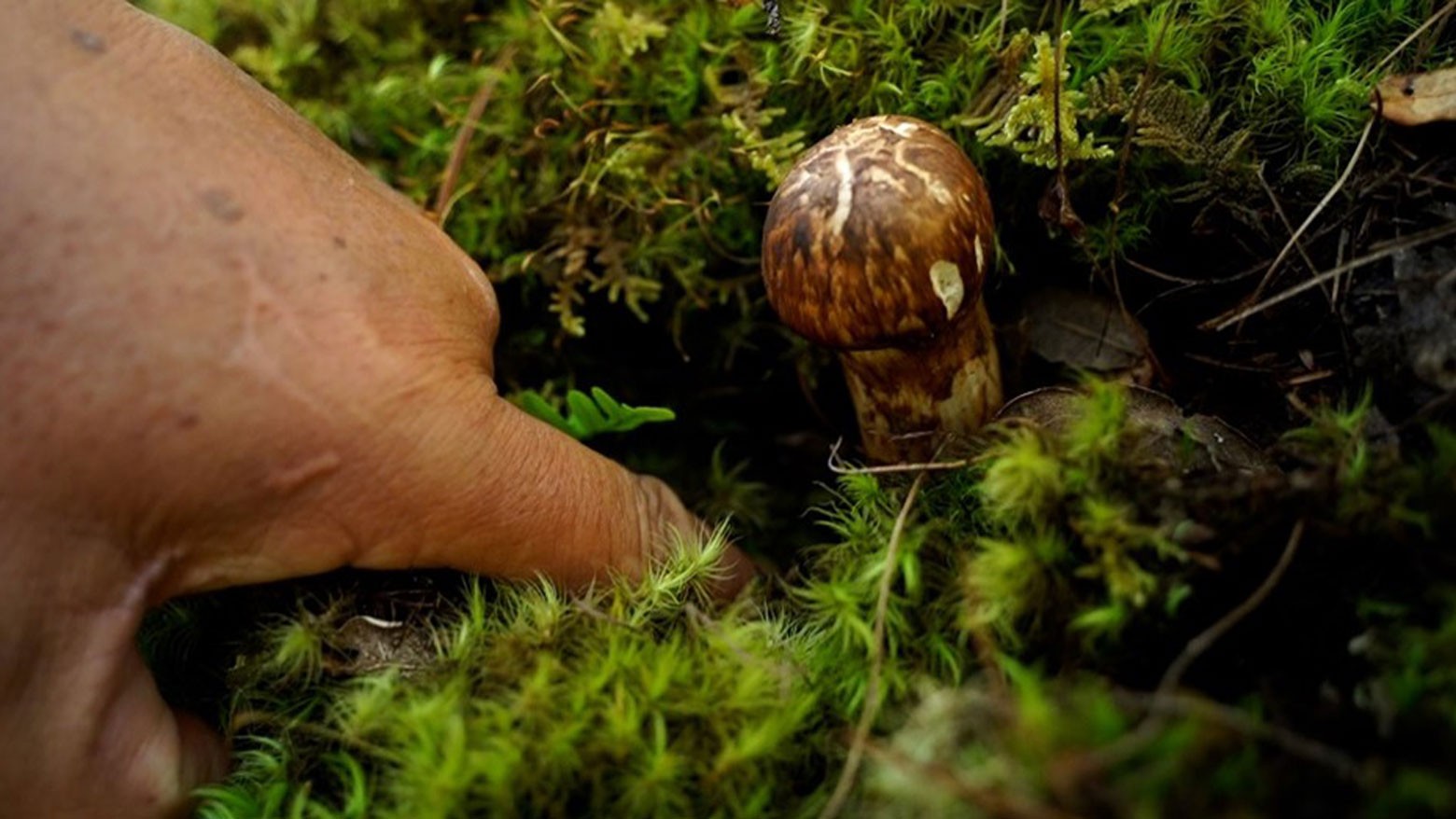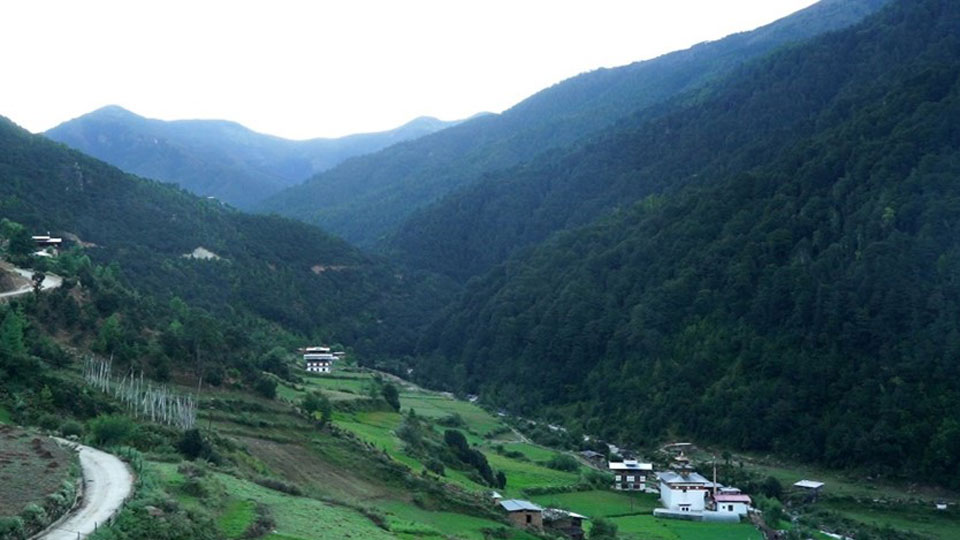
It's sunrise in the Bhutanese village of Genekha, about an hour's drive along the mountain roads from the kingdom's capital.
Sangay Dawa and his wife Dema are already dressed and ready to start work. The farming couple grow carrots and potatoes for most of the year, but from July to September, they go foraging for matsutake mushrooms. The fungi are not easy to find, but the rewards can be huge.
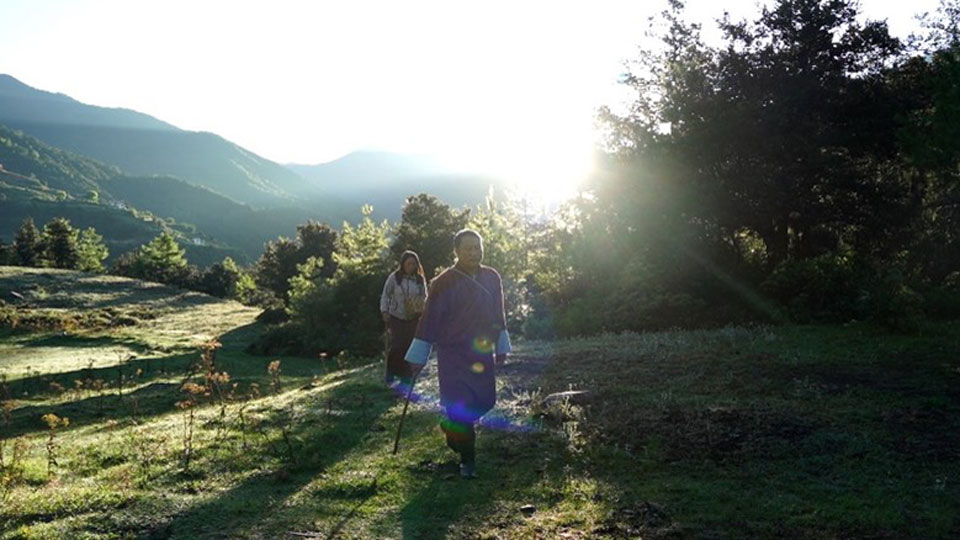
A tough forage
Matsutake grow wild at an altitude of 2,900 to 3,100 meters. Like that other prized fungus, the truffle, these mushrooms are hard to cultivate artificially. So foraging begins with a climb up the mountain path. It can be hard to find your footing on the rugged terrain. My trekking boots keep slipping. But Sangay and Dema have been doing this for decades. He is climbing in gumboots, while she wears only sandals. At one point during our ascent, Dema separates from us.
Every so often, Sangay stops and scans the ground.
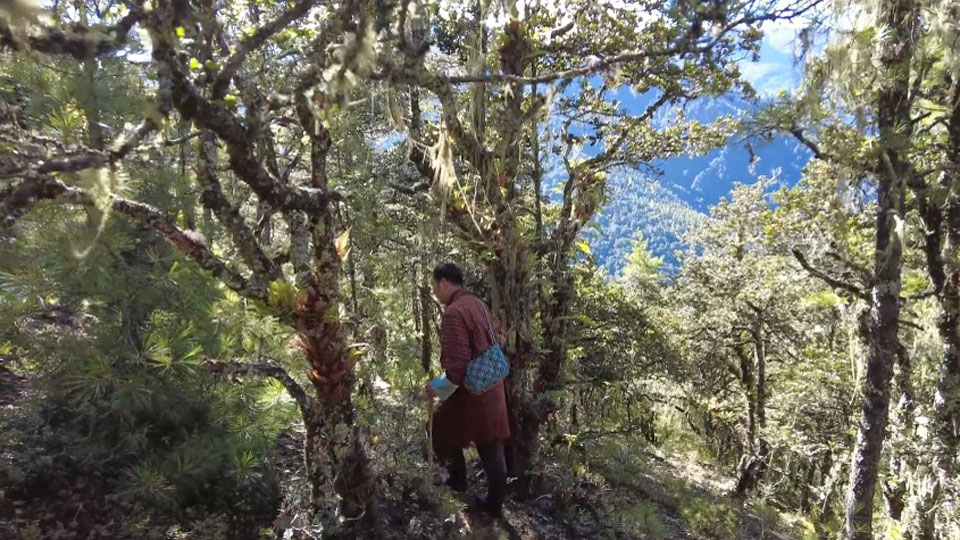
On some days, Sangay has told me, he returns home empty handed, and for thirty long minutes I thought that would be the case today. But he has also told me to be patient, and keep my eyes on the roots of trees, places covered with grass and anywhere with moss.
Spotted at last
Suddenly, Sangay smiles and points to a matsutake poking out of the soil. With a wooden stick, he loosens the earth around it and gently lifts it out. Over the next three hours he finds seven more. When we return to the village, Dema is there with exactly the same number.
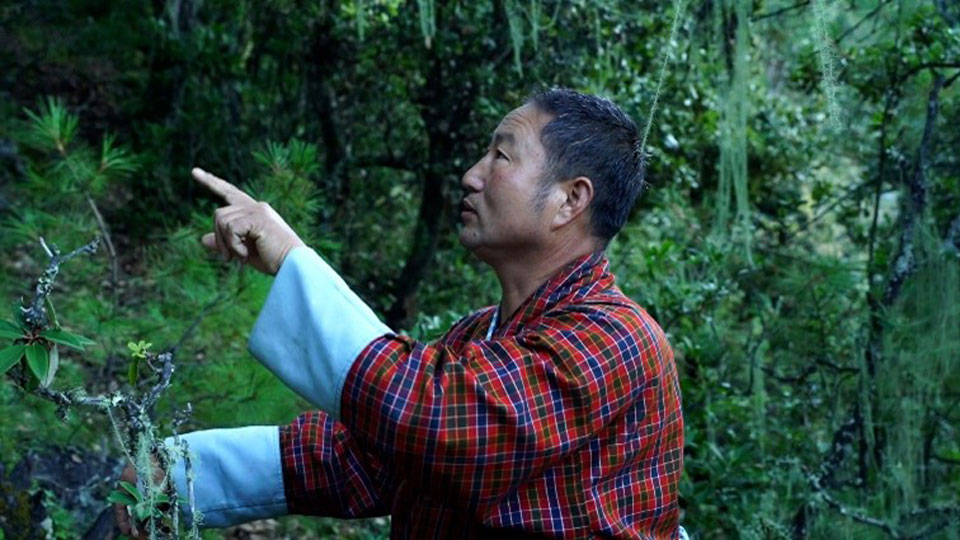
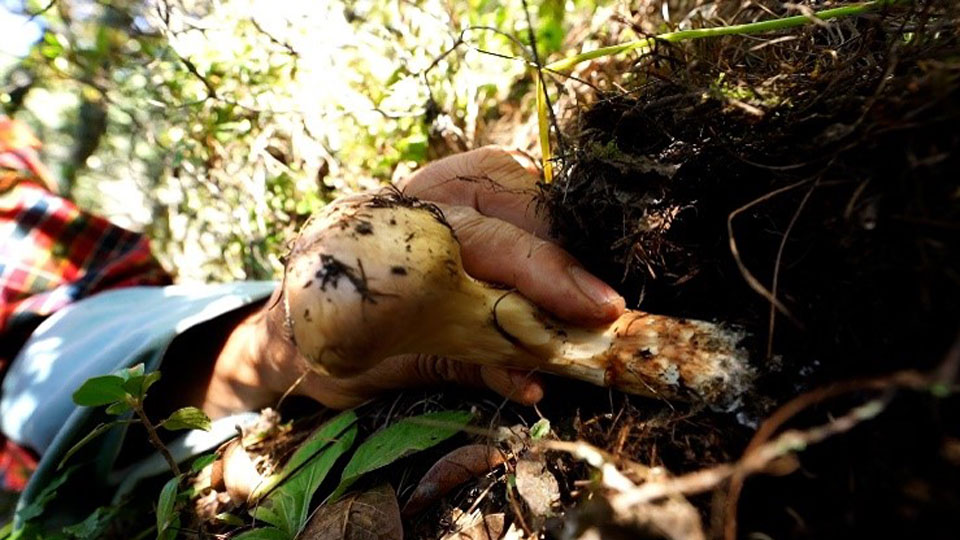
Once Hated, Now Loved
We go immediately to sell them. The market is little more than a makeshift tent on the mountainside, and appears only in mushroom harvesting season.
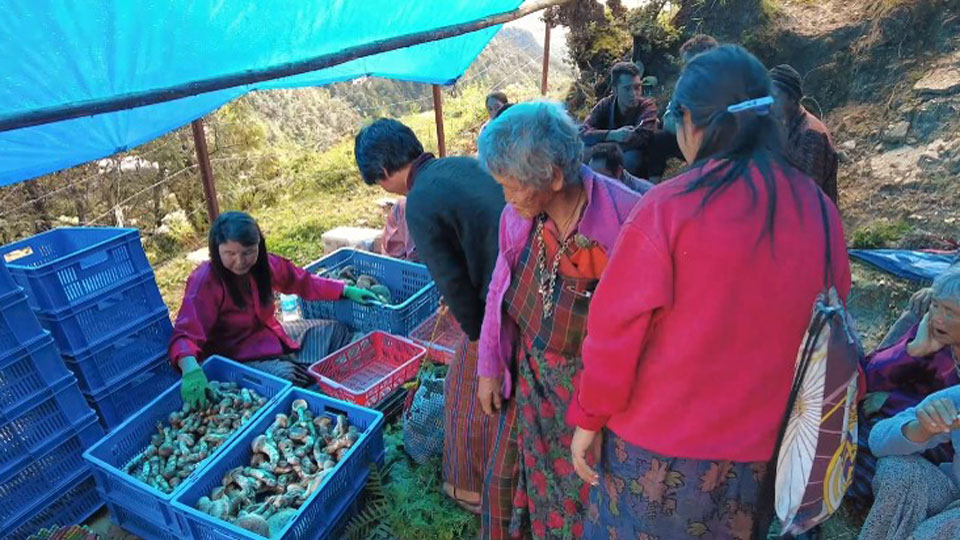
The buyer weighs the fungi, checks their size and shape, and scrutinizes them for scratches or insects. The prices change yearly, but this year, in good condition, they sell for about 2,700 yen per kilogram. Some villagers negotiate a higher price.
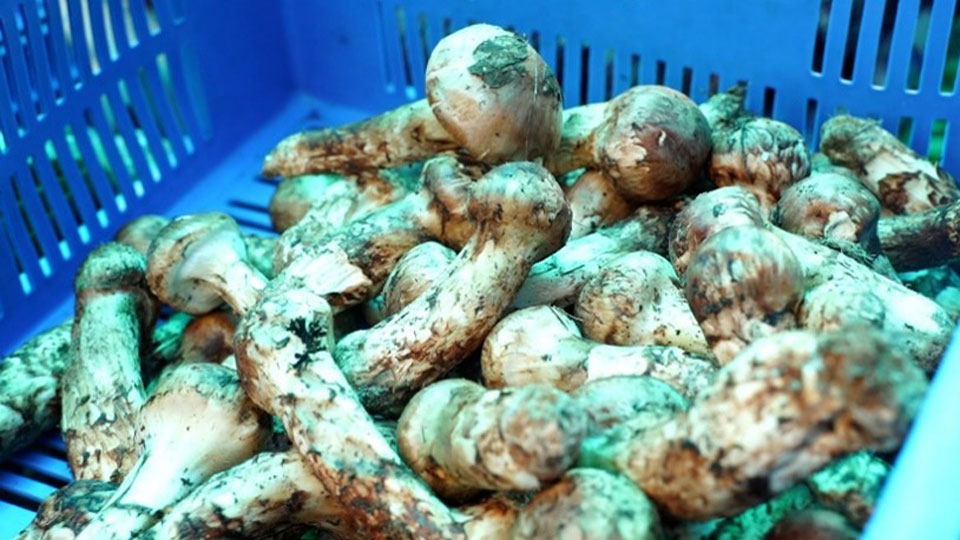
Matsutake are not new to Bhutan, but they merited little attention in the past. Most Bhutanese people dislike their aroma and never bothered to harvest them. That changed in the 1990s when people learned that these ugly mountainside fungi were considered delicacies in Japan. Exports began in earnest and now matsutake harvests account for more than 30 percent of Sangay's annual income.
For Japanese consumers, who eat more than ten times the amount of matsutake that domestic foragers can find, Bhutan's mushrooms are a blessing. One Japanese importer says the price of Bhutanese matsutake is one-third to one-tenth of the price of domestic ones and sales to restaurants and individual consumers are going up every year as the reputation grows.
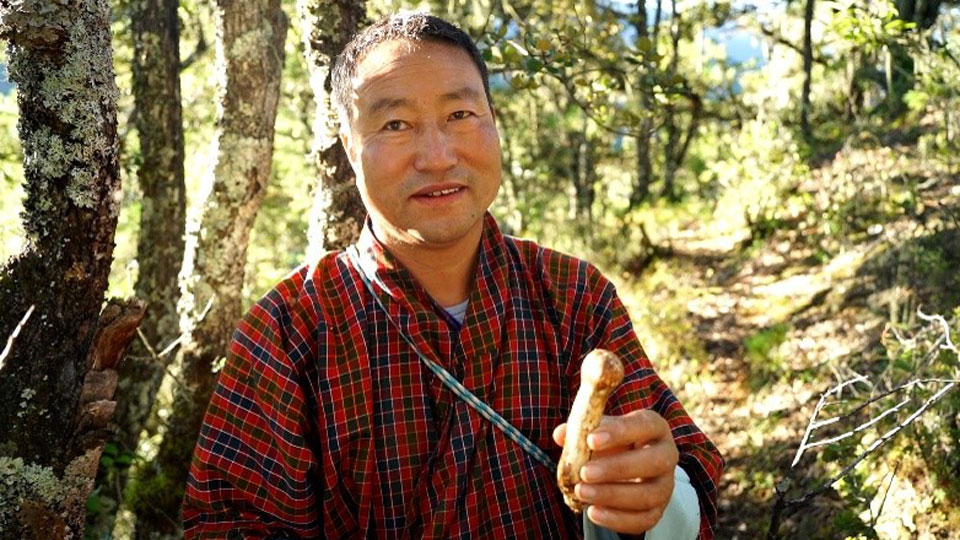
Sangay collects about 3,000 yen for his mushrooms. In Bhutan, that's more than an average teacher makes in a day. He smiles with satisfaction: it's a fair result for the end of the harvest season. After the sale is finalized, he tells me he hopes to sell matsutake directly to Japanese tourists who visit Bhutan.
For sustainable harvests
For Bhutan, which has a population of more than 700,000 and relies on imports for many of its daily necessities, acquiring foreign currency is essential and the matsutake trade has become a significant export earner. The government is trying to ensure the mushrooms can be harvested and shipped sustainably in the future.
The authorities provide on-site guidance, teach villagers not to harvest mushrooms smaller than 7.5 centimeters, and to cover the soil after collecting. The aim is to nurture an environment where matsutake can grow.
Dawa Penjor works for the Ministry of Agriculture and Forests' National Mushroom Center. He says matsutake are a valuable source of income for people in the community and an important export to maintain relations between Bhutan and Japan.
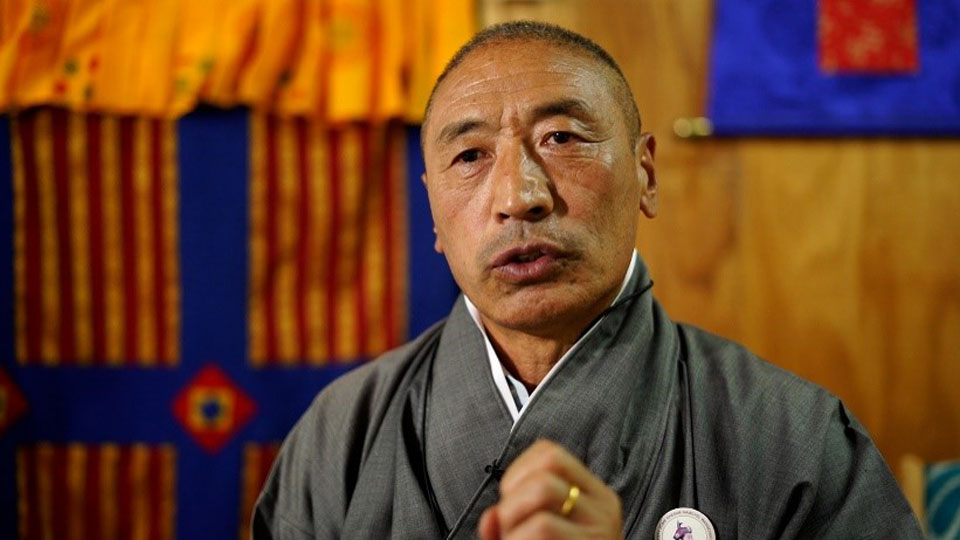
Bhutanese matsutake arrive in Japan around July to September each year. The export quantities took a hit with the spread of COVID-19 and the subsequent decrease in flights between the countries, but the planes are flying more frequently now, and the matsutake hunters are enjoying boom times once more.
